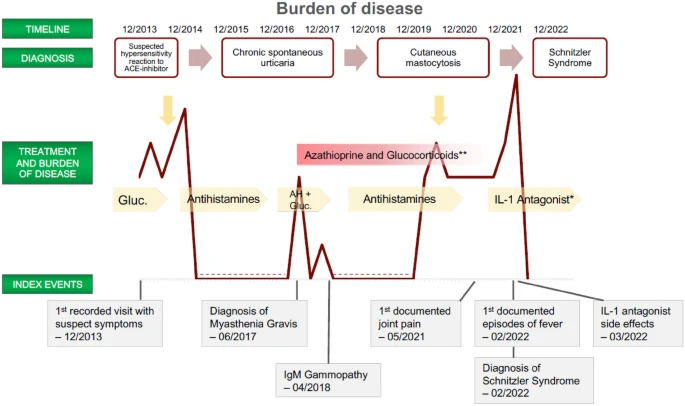- Case report
- Open Access
Allergy, Asthma & Clinical Immunology 19, Article number: 64 (2023)
Abstract
Background
Recurring therapy resistant hives, accompanied by IgM-gammopathy, fever and joint pain can indicate Schnitzler syndrome, a rare autoimmune disorder. There is currently no approved treatment, but complete remission of symptoms can be induced with IL-1 antagonists.
Case presentation
A patient with a history of chronic urticaria presented frequently at the outpatient clinic with severe hives and was treated unsuccessfully with antihistamines and omalizumab. After several years, additional symptoms such as joint pain, recurrent fever, and IgM-gammopathy developed. After the diagnostic criteria for Schnitzler syndrome were met, treatment with anakinra was initiated and resulted in an improvement of the symptoms. Shortly after the first injection, the patient developed large and painful erythematous lesions at the injection sites, leading to discontinuation of treatment and a rapid recurrence of symptoms. Subsequently, treatment with a longer-acting IL-1 antagonist (canakinumab) was initiated, resulting in a complete remission of symptoms.
Conclusion
This case report demonstrates that patients with urticarial symptoms that are not relieved by typical treatments should prompt repeated reassessments of the diagnosis, even years later, because gammopathy and other diagnostic criteria for Schnitzler syndrome can occur with a delay.


No comments:
Post a Comment